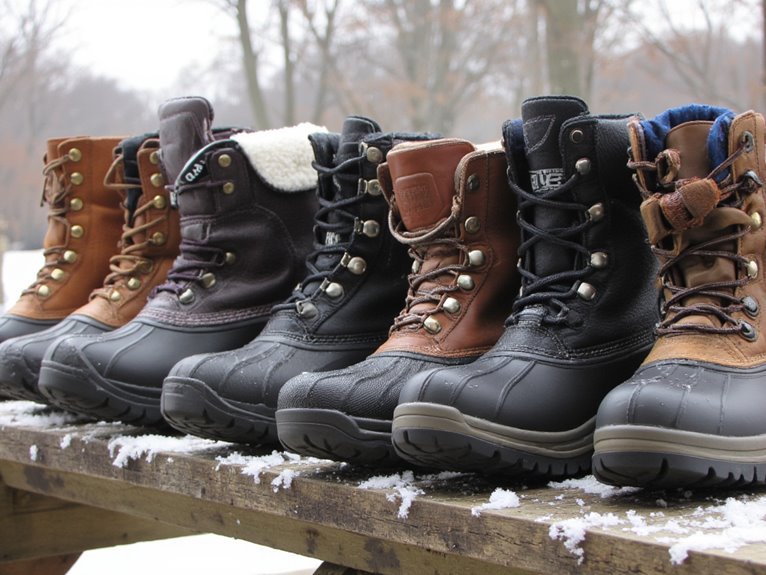What Should Be in a 72 Hour Bug Out Bag?
A well-stocked 72-hour bug out bag should contain essential items that cater to an individual's basic needs. Shelter and protection essentials include a tarp, rope, and warm sleeping bag or blanket. Water and food provisions should include at least three liters of water and non-perishable food items, along with water purification tablets or a portable filter. A first aid and hygiene kit, navigation and communication tools, and clothing and personal items should also be packed. By prioritizing these critical components, individuals can guarantee they are prepared for unexpected emergencies and equipped to stay safe and healthy until help arrives. Further preparation is key to securing a successful escape.
We are supported by our audience. When you purchase through links on our site, we may earn an affiliate commission, at no extra cost for you. Learn more. Last update on 6th January 2026 / Images from Amazon Product Advertising API.
Shelter and Protection Essentials
Adequate shelter and protection from the elements are vital for survival, and a well-stocked 72-hour bug-out bag should include a tarp, rope, and a warm, waterproof sleeping bag or blanket to provide a safe and comfortable refuge in emergency situations. These essentials provide a sturdy foundation for building a makeshift shelter, keeping you dry and protected from harsh weather conditions. A tarp can be used as a roof or wall, while rope can secure the structure and provide additional support. A warm, waterproof sleeping bag or blanket will keep you insulated and dry, reducing the risk of hypothermia and other cold-related illnesses. By including these shelter and protection essentials in your bug-out bag, you'll be better equipped to face unexpected disasters and emergency situations, guaranteeing a safer and more secure environment.
Water and Food Provisions
Having access to clean drinking water and non-perishable food supplies is essential for sustaining energy and maintaining health during emergency situations. A minimum of one liter of water per person per day is recommended, with a total of three liters per person for a 72-hour period. Water purification tablets or a portable water filter can also be included to guarantee access to safe drinking water. Non-perishable food items such as energy bars, canned goods, and dried fruits and nuts are ideal for a bug-out bag. It is also a good idea to include a manual can opener, as electric can openers may not be functional during an emergency. These provisions will help sustain individuals and families during a crisis, providing the necessary energy and nutrition to stay safe and healthy, and a water filter or purification tablets can also be added to safeguard access to potable water.
First Aid and Hygiene Kit
In addition to sustaining energy and health with water and food provisions, a well-stocked first aid and hygiene kit is essential for addressing unexpected medical needs and maintaining personal cleanliness during an emergency situation. A basic first aid kit should include bandages, antiseptic wipes, pain relievers, and any personal medications. Additionally, a hygiene kit should contain toilet paper, hand sanitizer, biodegradable soap, and feminine products if necessary. Don't forget to pack a small supply of moist towelettes, dental floss, and a small bottle of hand sanitizer. These essentials will help maintain personal health and prevent the spread of illness during an emergency.
Six essential navigation and communication tools should be included in your 72-hour bug-out bag to facilitate you can find your way and stay connected during an emergency. A compass is a must-have for navigation, ensuring you stay on course. A map of your area, preferably a topographic map, will help you identify safe routes and potential shelter locations. A whistle can be used to signal for help if you're lost or stranded. A two-way radio or a handheld satellite phone will enable you to stay in touch with family members or emergency services. A flashlight or headlamp will provide light during nighttime navigation. Finally, a personal locator transmitter (PLT) or satellite messenger can send distress signals to emergency responders in life-threatening situations.
Clothing and Personal Items
Your 72-hour bug-out bag should include a carefully curated selection of clothing and personal items that can help maintain your physical and emotional well-being during an emergency. Pack a minimum of three days' worth of clothing, including a change of socks and underwear, a warm hat and gloves, and a waterproof jacket. Don't forget a spare pair of sturdy shoes or boots. Personal items such as a toothbrush, toothpaste, and any essential medications should also be included. Consider adding a small supply of feminine hygiene products, baby supplies, or pet food if applicable. A small first-aid kit with basic supplies like bandages, antiseptic wipes, and pain relievers is also essential.


